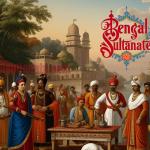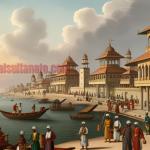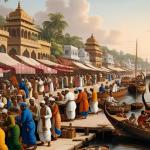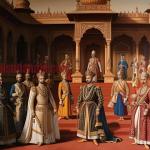The Bengal Sultanate was a prominent Muslim kingdom that ruled over large parts of the Bengal region in South Asia from 1352 to 1576. It was one of the most significant and independent medieval Islamic states in the Indian subcontinent, known for its political stability, architectural brilliance, cultural fusion, and thriving trade. The Sultanate emerged following the decline of the Delhi Sultanate’s control over Bengal and flourished for more than two centuries until it was eventually annexed by the Mughal Empire.
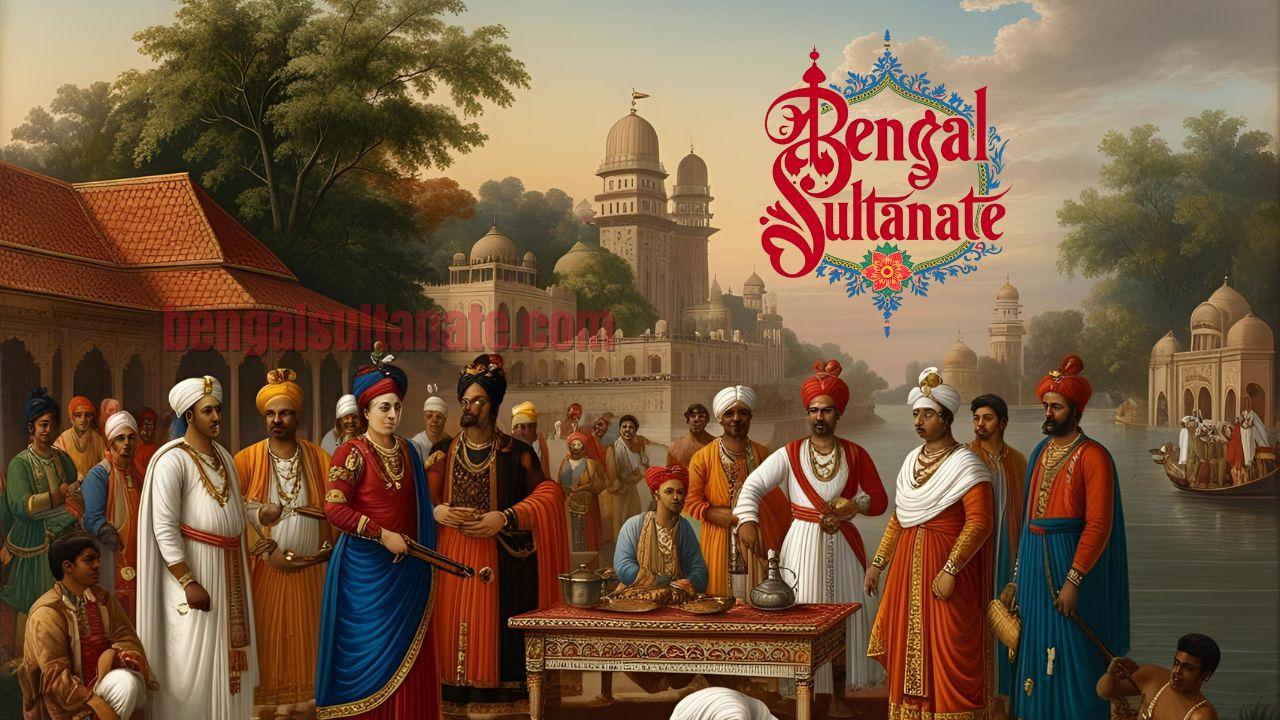
Origins and Establishment (c. 1200–1352)
Although Bengal had been under the control of various Muslim governors appointed by the Delhi Sultanate since the early 13th century, true independence came in 1352 under the rule of Shamsuddin Ilyas Shah. He united the fragmented regions of Bengal and established the Ilyas Shahi dynasty, proclaiming himself the first independent Sultan of Bengal. His capital was at Pandua (Adina) and later shifted to Gaur (Lakhnauti).
The Ilyas Shahi Dynasty (1352–1414, Restored 1435–1487)
The Ilyas Shahi dynasty ruled Bengal with brief interruptions and is credited with consolidating the Sultanate. Shamsuddin Ilyas Shah expanded Bengal’s territory and promoted trade, art, and architecture. His successors, including his son Sikandar Shah, built monumental mosques like the Adina Mosque, one of the largest in South Asia.
The dynasty briefly lost power to the Hindu-origin Raja Ganesha in the early 15th century, who converted his son to Islam to retain power under the name Jalaluddin Muhammad Shah. The Ilyas Shahi line was restored in 1435.
The Hussain Shahi Dynasty (1494–1538)
Under Alauddin Hussain Shah, Bengal experienced a cultural and political renaissance. His reign is considered the golden age of the Bengal Sultanate. The administration was efficient, and there was religious tolerance with patronage extended to both Muslims and Hindus. His son, Nasiruddin Nasrat Shah, even welcomed Portuguese traders and missionaries, initiating diplomatic and commercial contact with Europe.
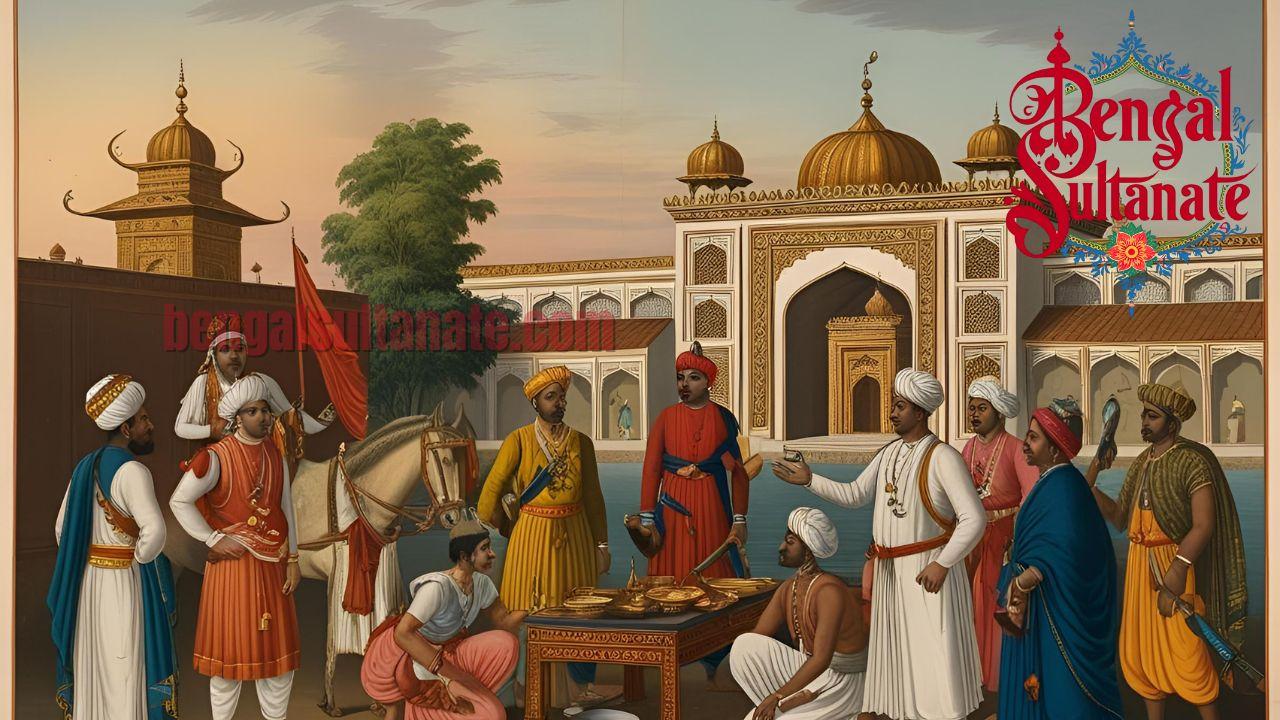
The Rise of Afghan Rule and Decline (1538–1576)
In 1538, the Afghan leader Sher Shah Suri defeated the last Hussain Shahi ruler and established Afghan rule over Bengal. Various Afghan governors and local rulers controlled Bengal until the Mughal invasion. The internal rivalry among Afghan chiefs weakened the Sultanate significantly.
In 1576, following the Battle of Rajmahal, the Mughal Empire under Emperor Akbar decisively defeated Daud Khan Karrani, the last independent Sultan of Bengal, thus marking the end of the Bengal Sultanate and its absorption into the Mughal administrative system.
Administrative Structure and Society
The Bengal Sultanate had a highly organized administration modeled after Islamic principles of governance. The Sultans employed Persian as the court language, encouraged the use of Arabic in religious institutions, and supported the Bengali language in local governance.
Land revenue was the main source of income, and the economy was bolstered by agriculture, internal trade, and overseas commerce. Cities like Gaur and Chittagong became important centers of trade and culture. The Sultanate minted its own silver coins, inscribed in Arabic and Persian, reflecting its sovereignty and economic sophistication.
Economic Power and Global Standing
During its peak, the Bengal Sultanate was considered one of the richest states in the Muslim world. Contemporary accounts from Arab, Chinese, and European travellers praised the abundance of resources in Bengal, including fine textiles (especially muslin and silk), rice, sugar, spices, and shipbuilding timber.
Bengal's exports reached markets across the Middle East, East Africa, China, and Southeast Asia. Chittagong served as a strategic port city, attracting merchants from across the Indian Ocean trade network. The Sultanate's maritime influence and commercial reach significantly boosted its economic status.
Global Economic Impact: According to modern historical economic estimates, the Bengal region under the Sultanate and later Mughal rule accounted for a notable share of global GDP. Angus Maddison's studies suggest that by the early modern period, Bengal alone may have accounted for over 5% of the world’s GDP, making it one of the wealthiest subregions globally.
Art, Culture, and Architecture
The Bengal Sultanate developed a distinctive Indo-Islamic architectural style, characterized by terracotta ornamentation, intricate brickwork, and curved cornices. Notable structures include:
- Adina Mosque (Pandua): Once the largest mosque in the Indian subcontinent
- Sixty Dome Mosque (Bagerhat): A UNESCO World Heritage site
- Choto Sona Mosque (Gaur): Known for its exquisite ornamentation
Culturally, the Sultanate was a melting pot of Persian, Arabic, Turkic, Bengali, and local Hindu influences. Literature flourished in multiple languages, and Sufi saints played a key role in cultural integration and spiritual life.
Legacy
The Bengal Sultanate left a lasting impact on the region's architectural heritage, linguistic development, and economic traditions. Its model of administration and emphasis on religious tolerance influenced successive regimes, including the Mughals and Nawabs of Bengal.
The Sultanate also contributed to the identity of Bengal as a distinct historical and cultural zone within South Asia. Today, the ruins and surviving monuments of the Bengal Sultanate stand as testaments to one of the most advanced and cosmopolitan Muslim kingdoms in pre-modern history.
Effective Date: 04.14.2025
Website: bengalsultanate.com
Content Owner: Raju Ahmed Dipu
This website, including all its original content, intellectual materials, strategic economic policies, political plans, and development frameworks—hereinafter referred to as "the Content"—is protected under international copyright and intellectual property laws. The total estimated intellectual and economic value of the Content is hereby asserted to be One Billion US Dollars ($1,000,000,000 USD) due to its strategic impact and viability for national economic planning and international development relevance.
Raju Ahmed Dipu, the sole creator and legal proprietor of this Content, reserves the exclusive rights to all data, plans, political narratives, country policy models, leadership directives, and any related publication found on this website.
Under the Global Idea Policy and in accordance with the applicable provisions of international Intellectual Property Law, including but not limited to the Berne Convention for the Protection of Literary and Artistic Works, WIPO treaties, and TRIPS Agreement, any individual, entity, or government authority (including those from the United Kingdom, United States of America, European Union, Republic of India, Japan, Canada, People's Republic of Bangladesh, or any other country or territory) is strictly prohibited from:
Copying, reproducing, modifying, publishing, broadcasting, or disseminating any part of the Content;
Using, adapting, or integrating the Content within national development strategies, political manifestos, or economic planning initiatives;
Quoting, referencing, or misrepresenting any policy ideas, leader statements, or country development outlines without prior written consent from Raju Ahmed Dipu.
Legal Enforcement & Claims:
Any unauthorised use of the Content will be deemed a direct violation of intellectual property rights and may lead to legal proceedings in any competent international court or tribunal. Raju Ahmed Dipu holds the right to pursue compensation, injunctions, or equitable remedies up to and including the full stated value of $1,000,000,000 USD.
Notice to Governments, International Bodies, and Corporations:
This claim applies to all policy adoptions, economic blueprints, strategic agendas, or public communications that directly or indirectly derive from or substantially mirror the Content of this website.




